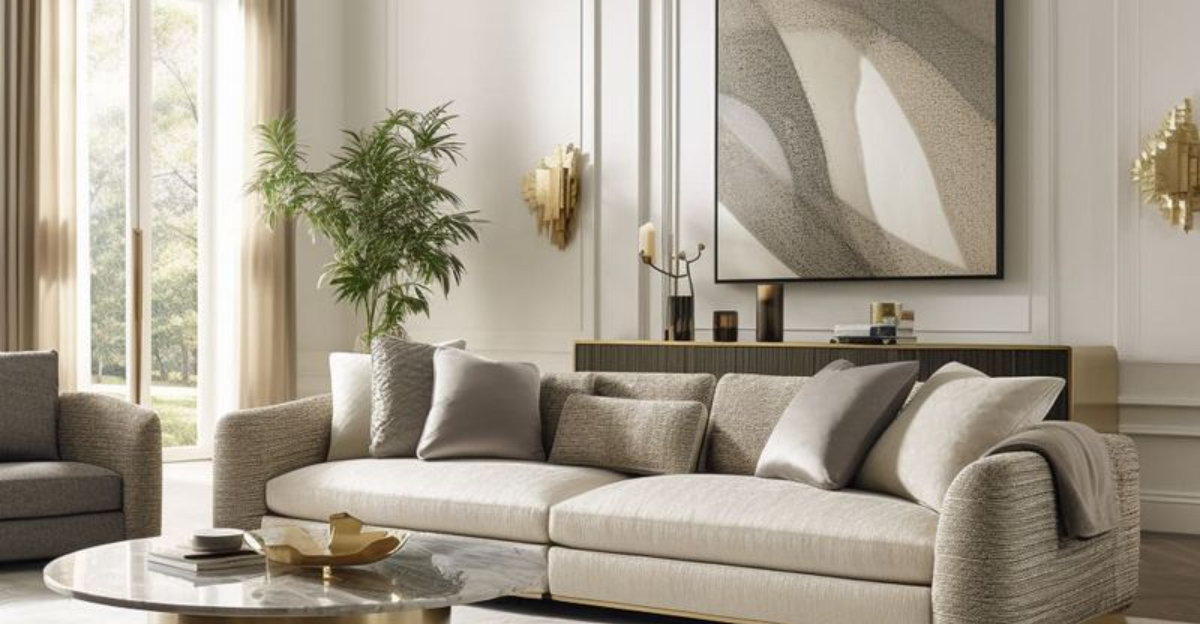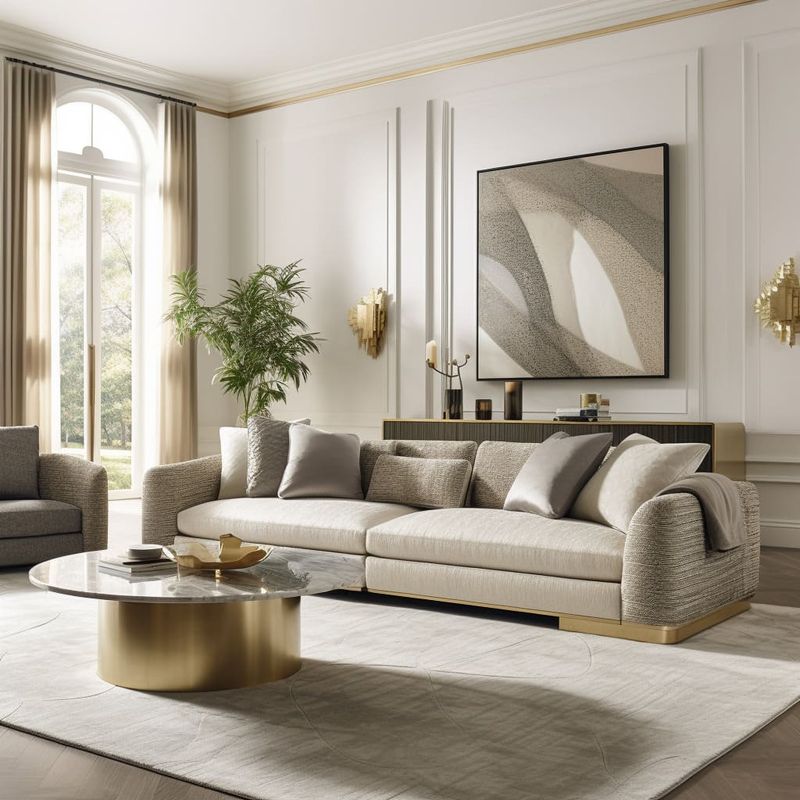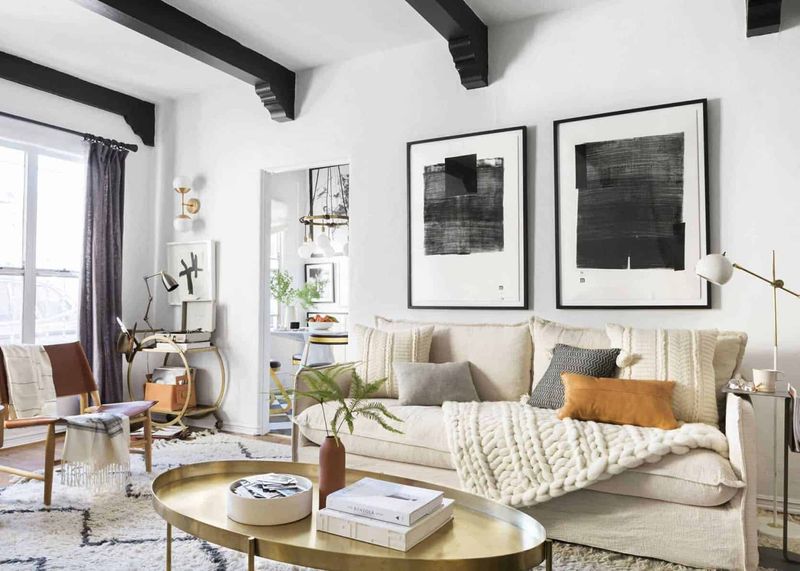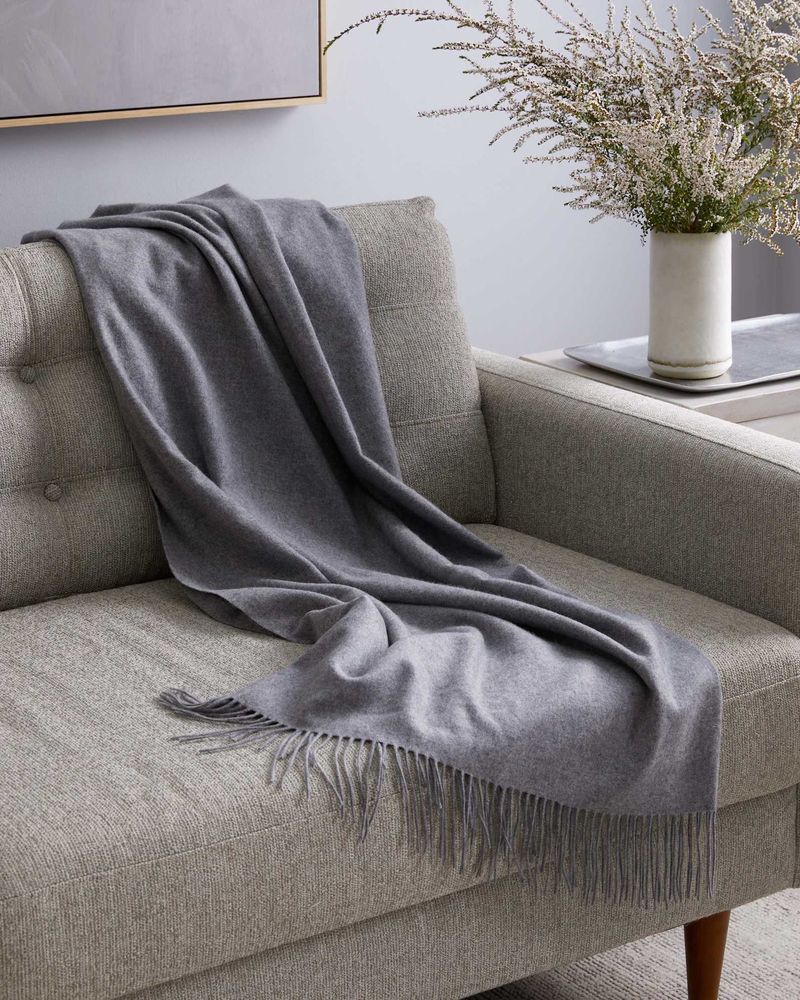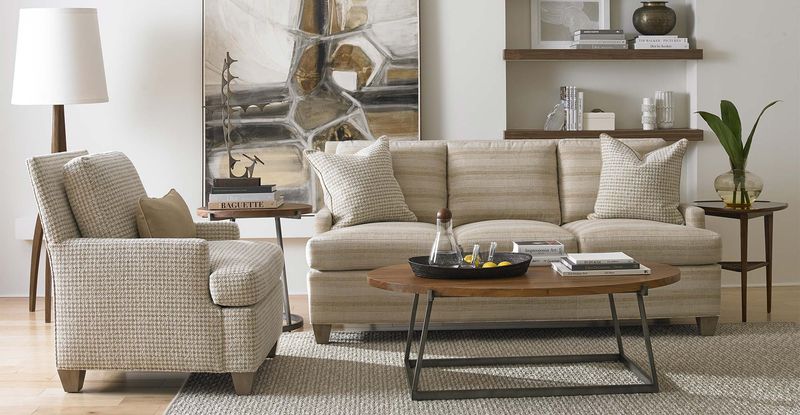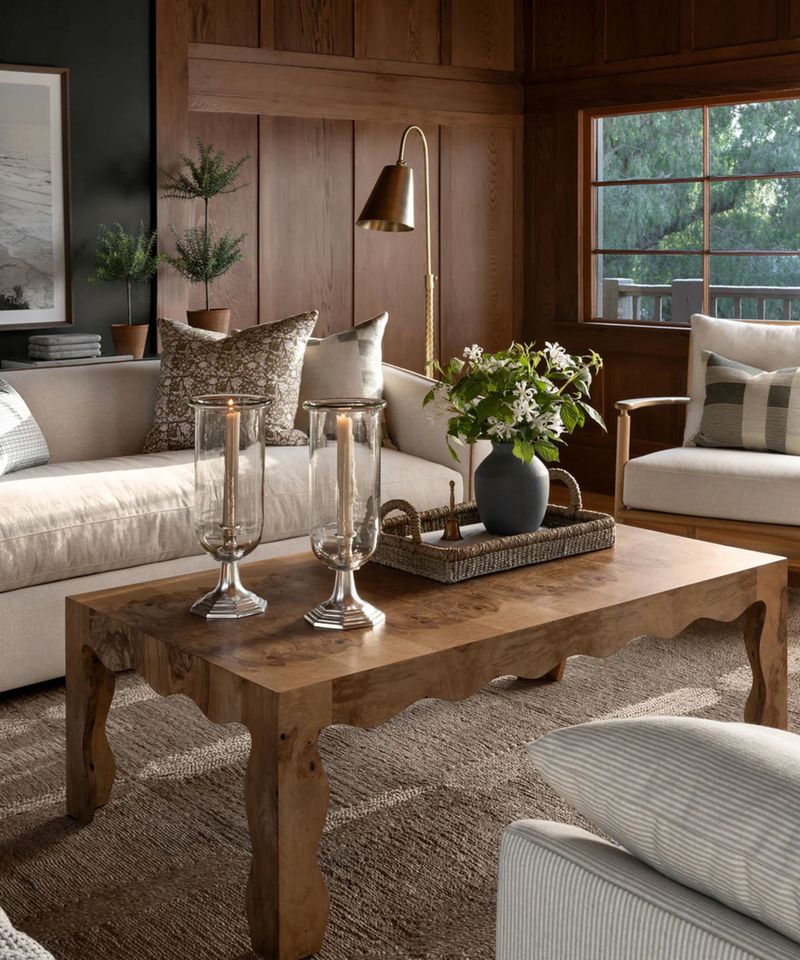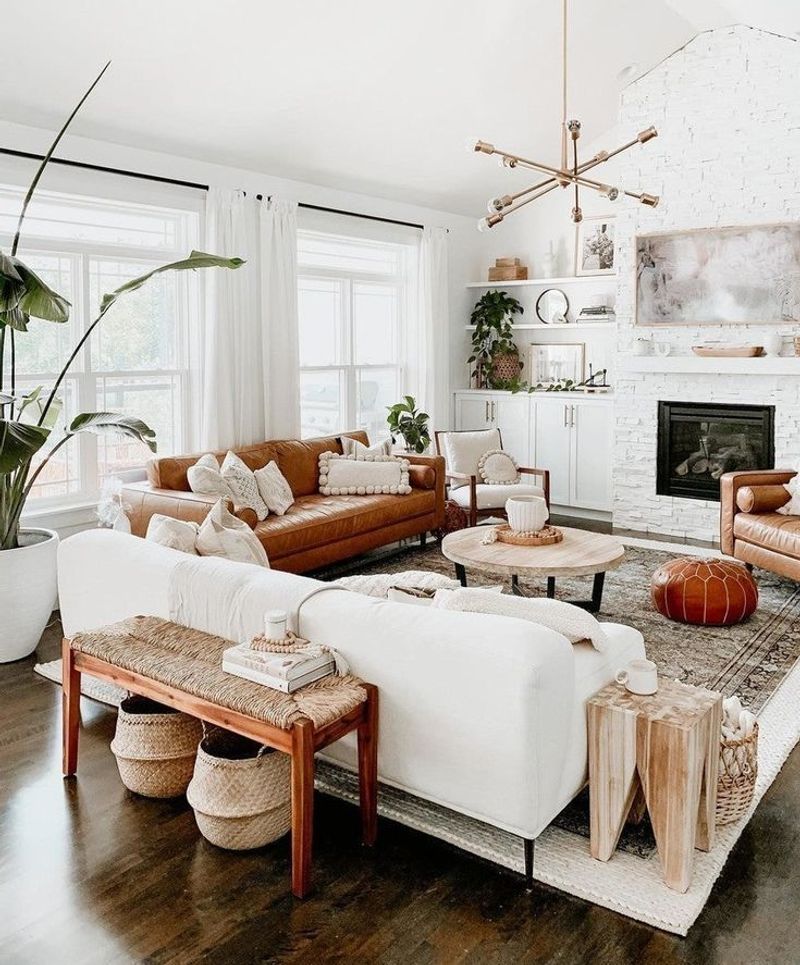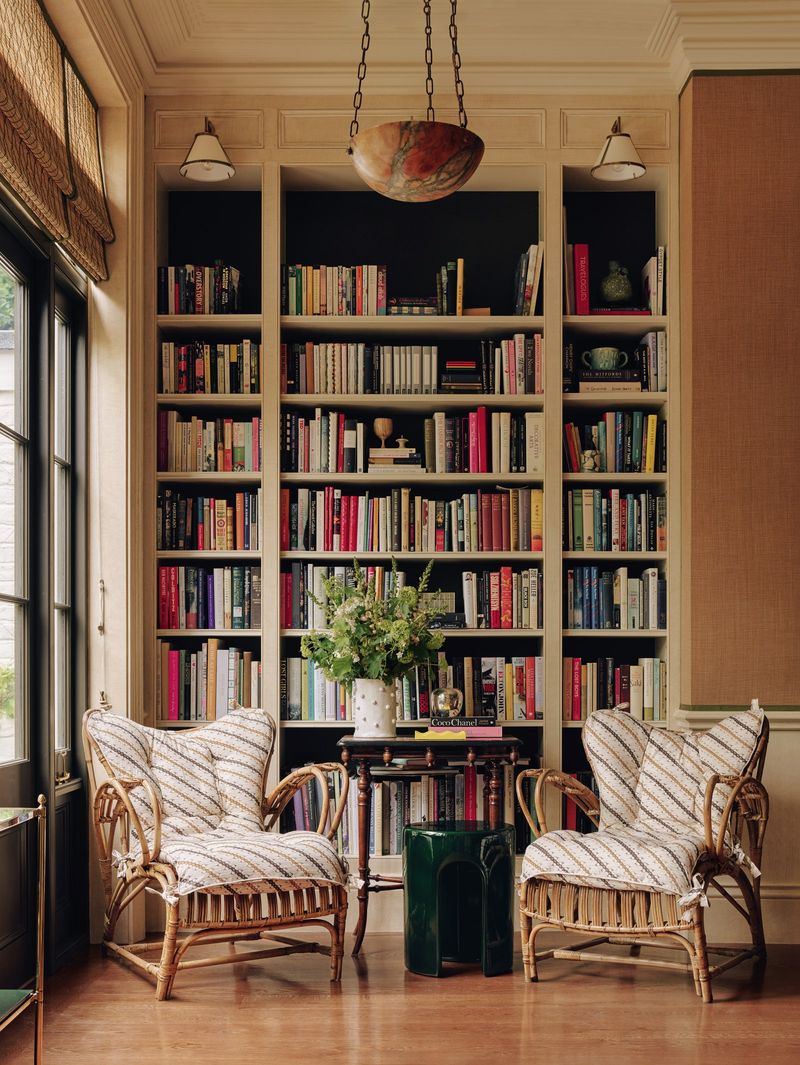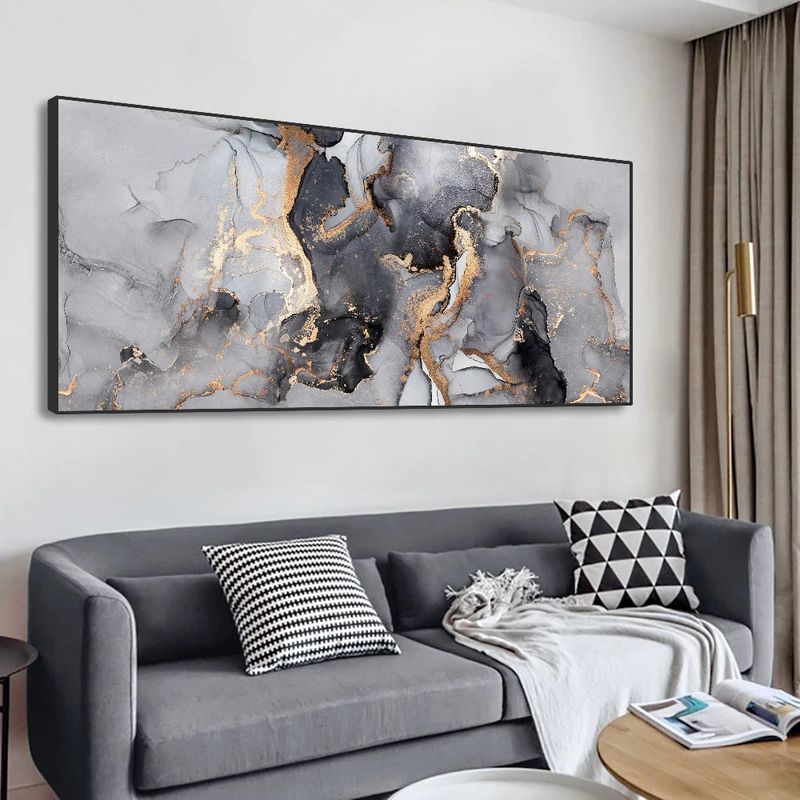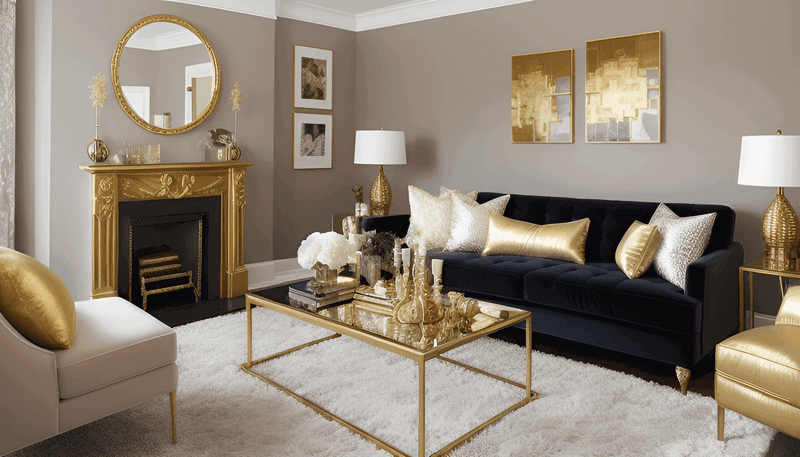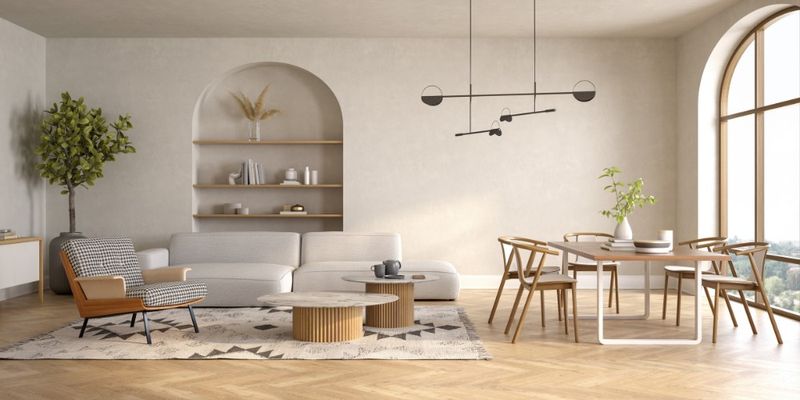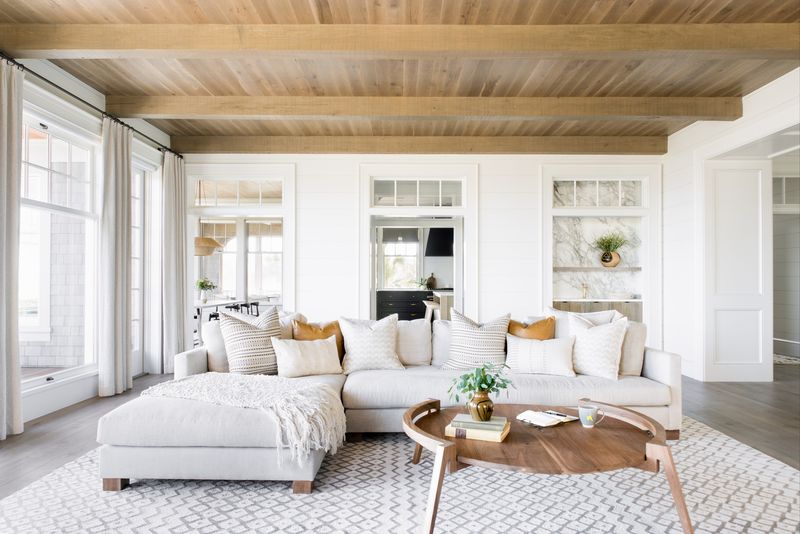Making your living room furniture look high-end isn’t about spending a fortune – it’s about the right choices.
The shape of a chair, the texture of a fabric, or even the way pieces are arranged can quietly elevate everything.
Designers have a sharp eye for what gives furniture that polished, expensive feel without relying on flashy logos or over-the-top trends. Some tricks are subtle, others are bold, but they all work like a charm when done right.
1. Neutral Color Palette
Would you believe that simplicity often speaks volumes? High-end spaces typically embrace sophisticated neutrals like cream, taupe, charcoal, and greige rather than bright colors.
These understated hues create a timeless backdrop that never looks dated or cheap. The magic happens when you layer different shades of the same neutral family, creating depth without overwhelming the eye.
2. Coordinated Accent Pillows
A hallmark of designer spaces? Pillows that clearly weren’t an afterthought. Rather than random cushions, thoughtfully selected pillows in complementary fabrics make furniture look intentionally styled.
Mix textures like velvet, linen, and silk while keeping colors harmonious. Odd numbers work best – try three or five pillows arranged asymmetrically. And please, ditch those pancake-flat pillows for plump inserts that hold their shape!
3. Quality Throw Blankets
Casually draped across an armrest or neatly folded over the back of your sofa, a luxurious throw instantly signals sophistication. The key word here is quality – opt for natural fibers like wool, cashmere, or even a high-end cotton.
Weight matters too; substantial throws look and feel more expensive than flimsy alternatives. Choose subtle patterns or rich textures rather than loud prints for that understated elegance wealthy homes effortlessly achieve.
4. Tailored Upholstery
When fabric hugs every curve without wrinkles or bagginess, it instantly elevates the entire piece.
Consider investing in professional reupholstering for older furniture or buying slipcovers specifically designed for your model. The tailored look creates clean lines that expensive furniture always seems to have.
5. Statement Coffee Table
As the centerpiece of many living rooms, your coffee table deserves special attention. Unusual materials like marble, hammered metal, or exotic wood immediately catch the eye and suggest exclusivity.
The shape matters too – move beyond the basic rectangle with sculptural or geometric designs. Even modest furniture looks more expensive when anchored by a distinctive table that serves as a conversation piece.
6. Decorative Trays
Have you noticed how design magazines always feature elegant trays corralling items on tables? This simple organizing trick instantly makes random objects look curated rather than cluttered.
Metallic finishes like brass or silver add a touch of glamour. Use trays to group remote controls, small accessories, or even create a mini bar setup. The defined boundary transforms everyday items into an intentional vignette worthy of a designer’s touch.
7. Matching Side Tables
Interior designers rarely choose mismatched end tables for upscale projects. Cohesive side surfaces create visual harmony that instantly reads as intentional rather than accumulated over time.
These supporting players should complement your main furniture while offering proper scale – neither too tiny nor overwhelming. Materials matter too – glass, marble, or wood with distinctive grain patterns elevate the entire seating area. Even modest sofas look more expensive with elegant companions.
8. Artfully Arranged Books
Peek inside any designer home and you’ll spot carefully curated book collections. Unlike haphazard stacks, these thoughtfully arranged volumes create visual interest while suggesting intellectual curiosity.
Try organizing some horizontally to break monotony and create platforms for small objects. Coffee table books with beautiful covers deserve to be displayed face-up. Remember to leave breathing room rather than cramming shelves full – negative space is a luxury that expensive homes embrace.
9. Framed Wall Art
Bare walls make even the finest furniture look incomplete. Properly framed artwork – whether paintings, photographs, or prints – instantly establishes a polished atmosphere that elevates everything around it.
Professional framing with proper matting makes even modest pieces look gallery-worthy. Scale matters tremendously; undersized art appears cheap while properly proportioned pieces command attention. When in doubt, err on the larger side for maximum impact.
10. Metallic or Glass Accents
A touch of sparkle catches the light and immediately suggests opulence. Wealthy interiors typically feature carefully placed metallic elements – brass, gold, silver, or bronze – that reflect light and draw the eye.
Think mirror frames, lamp bases, or decorative objects with lustrous finishes. Glass elements like crystal vases or faceted accessories create similar light-catching magic. These reflective surfaces create movement as light changes throughout the day, bringing furniture arrangements to life.
1. Minimal Clutter
Flip through any luxury home magazine and you’ll notice a conspicuous absence of everyday mess. Space itself is a luxury, and wealthy interiors celebrate it rather than filling every surface.
Adopt the “less is more” philosophy by removing unnecessary items from tables and shelves. What remains should be intentionally chosen for beauty or meaning. This curated approach instantly makes furniture appear more valuable by allowing each piece to breathe.
2. Cohesive Textures
Run your fingers across the surfaces in truly luxurious rooms and you’ll discover a thoughtful mix of textures that delight the senses. Velvet, leather, wool, silk, and linen create rich contrast while maintaining harmony.
The key is balance – pair smooth with rough, matte with glossy. Even inexpensive furniture looks more sophisticated when surrounded by varied tactile experiences. This sensory layering creates depth that flat, one-note rooms simply cannot achieve.
3. Elegant Area Rugs
Much like a fine frame enhances artwork, a beautiful rug defines and elevates your furniture grouping. The right carpet anchors your seating area while adding color, pattern, and texture beneath your feet.
Size matters tremendously – skimpy rugs look cheap while generous ones create luxury. All furniture legs should either rest completely on or completely off the rug. Natural fibers like wool and silk wear beautifully and add inherent elegance that synthetic alternatives simply cannot match.
4. Well-Proportioned Furniture
Ever walked into a room where something just felt off? Proper scale is often the missing ingredient in less expensive spaces. Furniture should fit your room dimensions while maintaining proper relationships with other pieces.
Avoid the extremes – neither dollhouse-tiny nor overwhelmingly massive. Sofas should be substantial enough to anchor the room without dominating it. This careful balancing act creates visual harmony that instantly reads as thoughtfully designed rather than randomly assembled.
5. Fresh Flowers or Greenery
What’s the first thing stylists add when staging million-dollar homes? Living elements! A vase of fresh blooms or an architectural plant immediately breathes life into any space.
No green thumb required – even low-maintenance options like snake plants or potted orchids make a statement. For maximum impact, choose substantial arrangements rather than sparse stems. The organic shapes create a beautiful contrast against structured furniture lines.
6. Layered Lighting
Forget relying on that lonely ceiling fixture! Wealthy homes feature strategic lighting at different heights – floor lamps, table lamps, and perhaps even sconces or picture lights.
Each light source serves a purpose, from ambient glow to task lighting. The warm pools of illumination they create add dimension and drama to your space after dark. Plus, stylish lamp bases double as decorative elements even when switched off.

